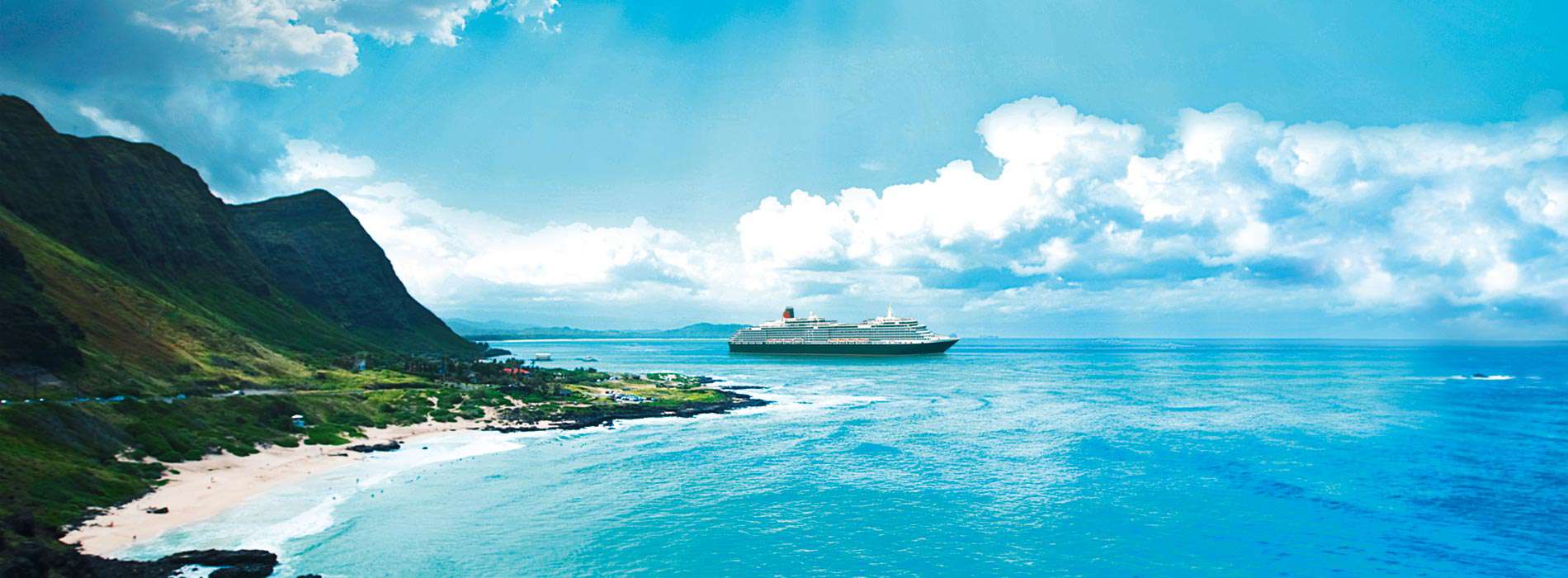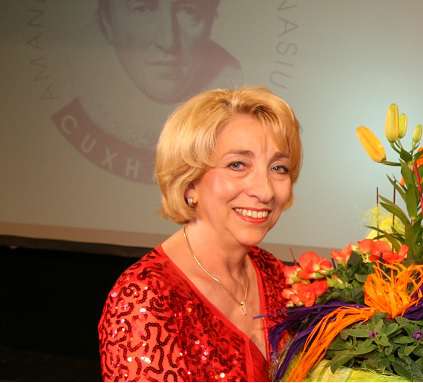Beautiful experiences in the South Pacific in Alotau
E phatlaladitšwe: 07.03.2017
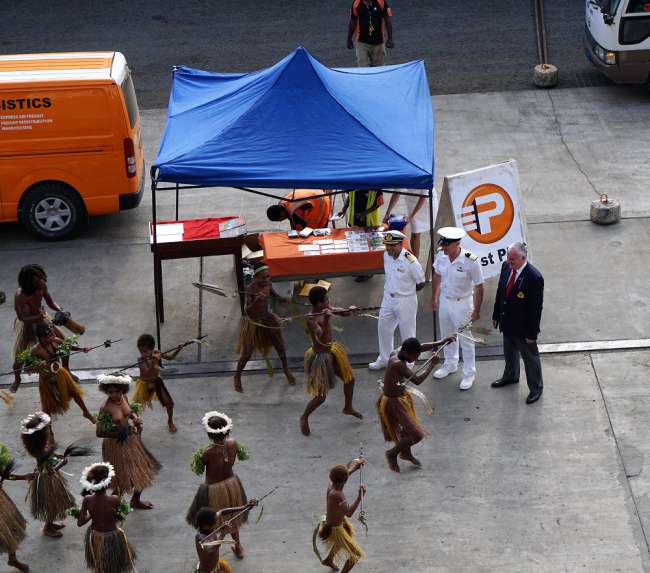
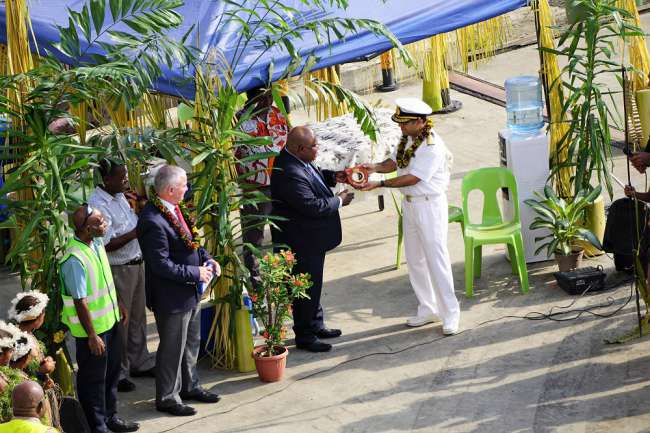
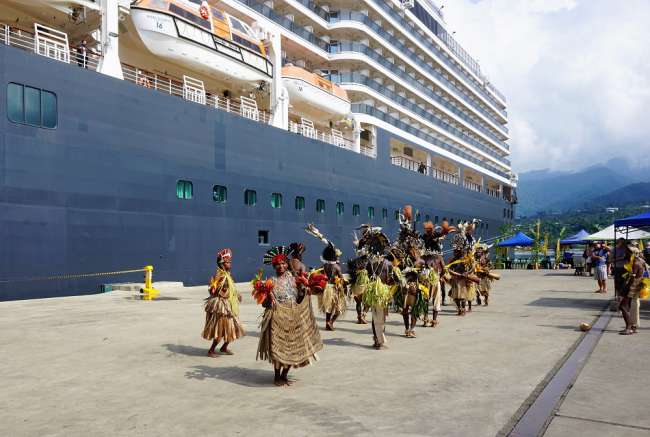
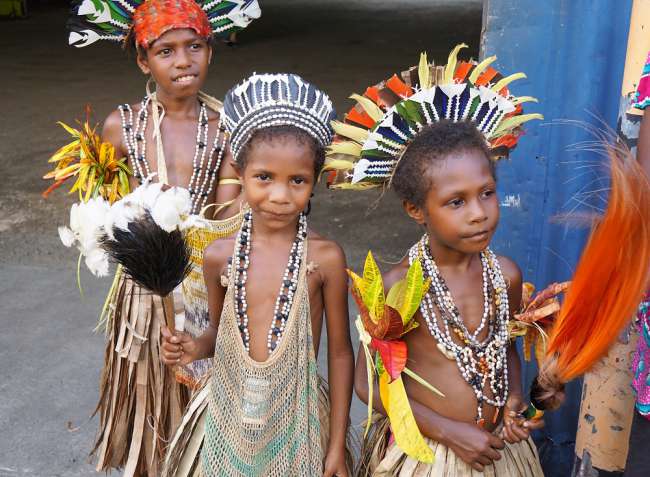
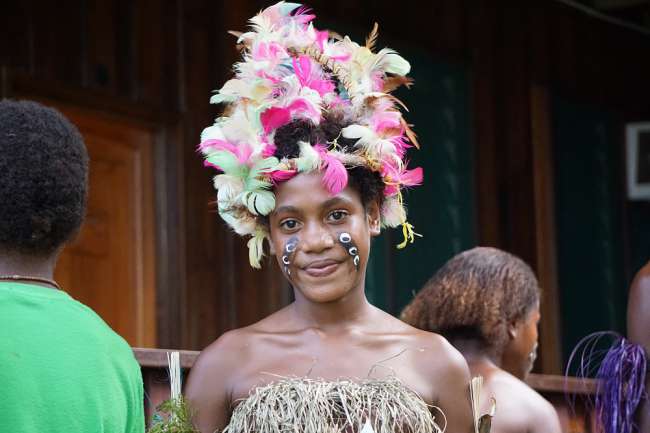
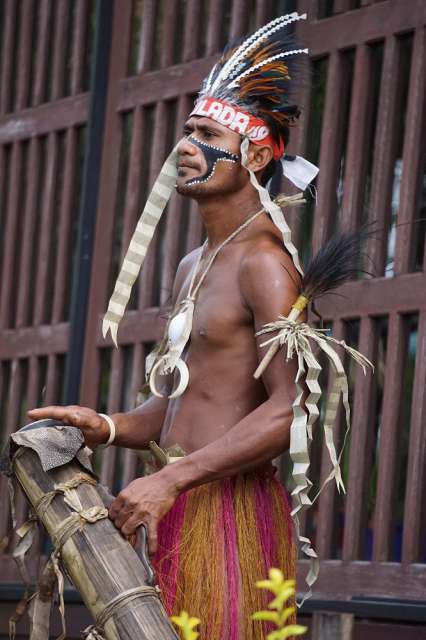
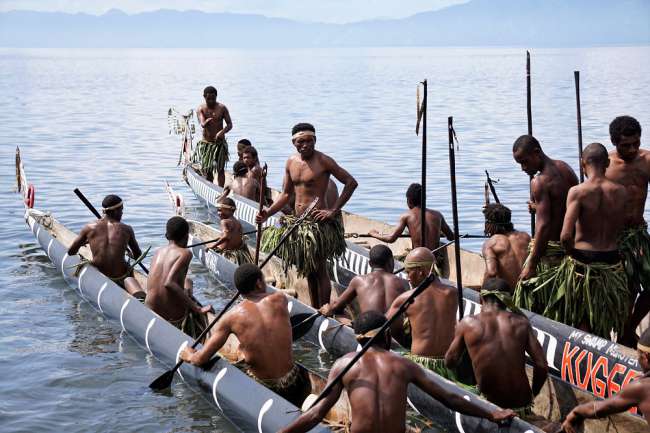
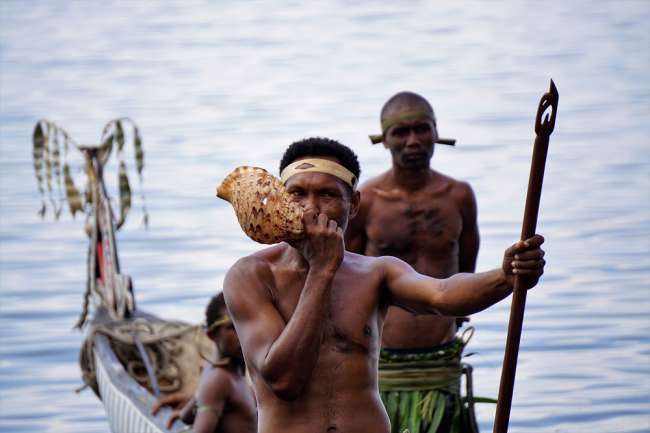
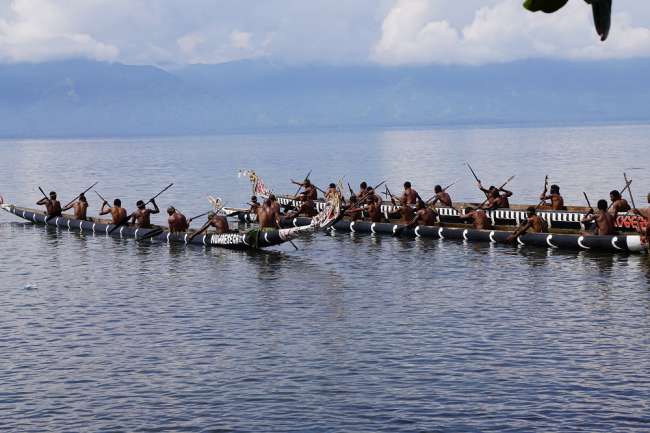
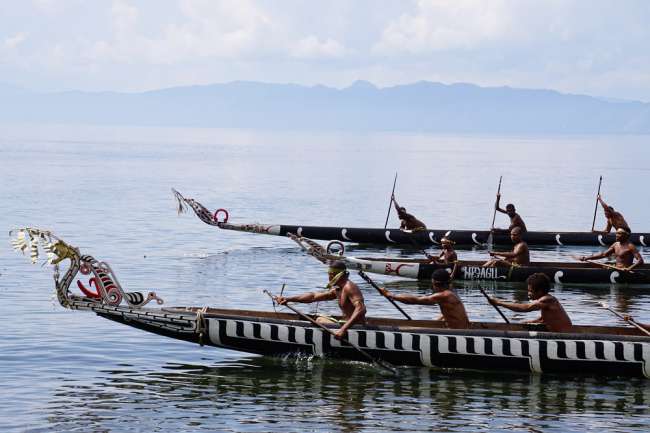
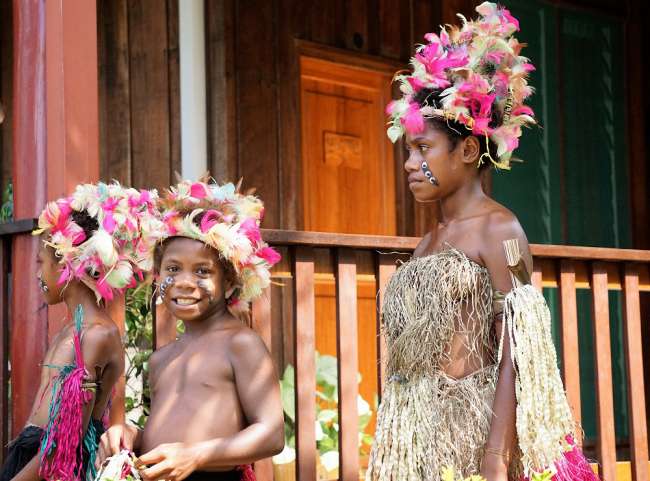

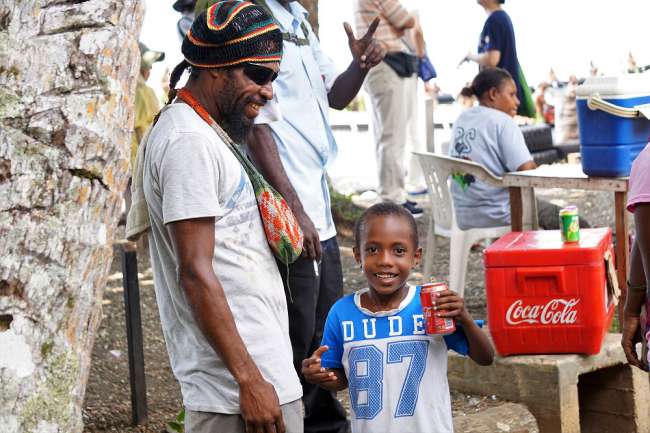
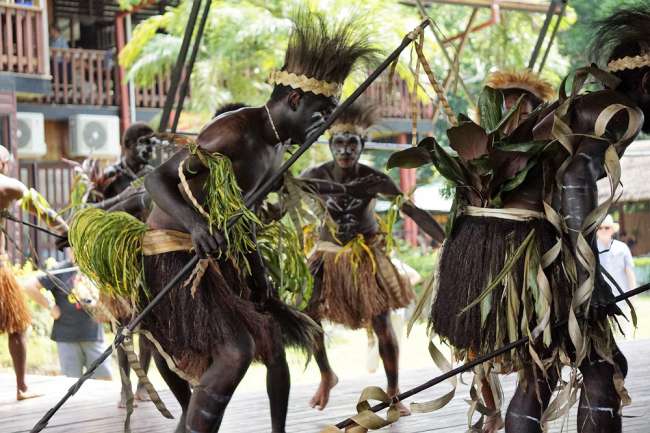
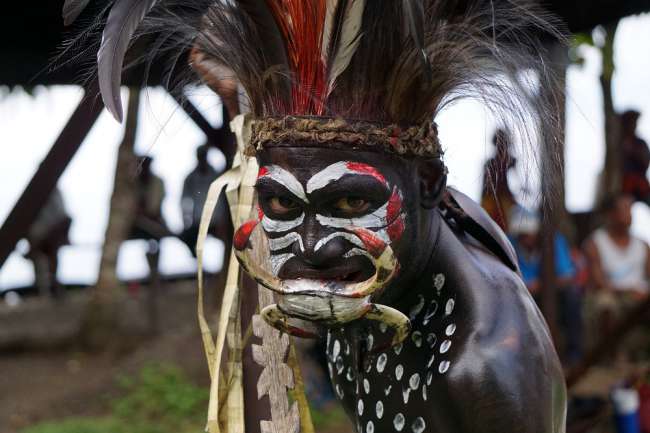
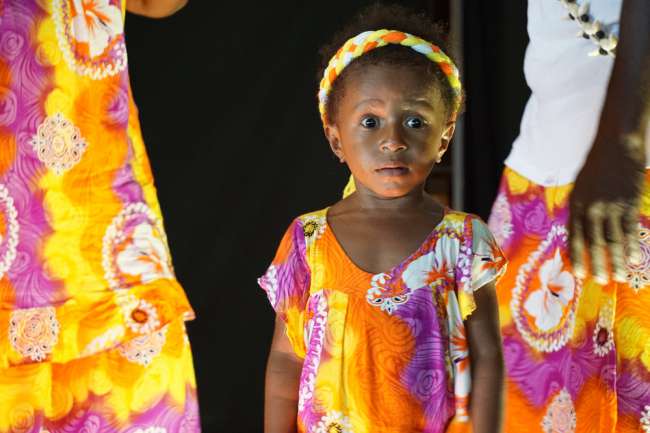
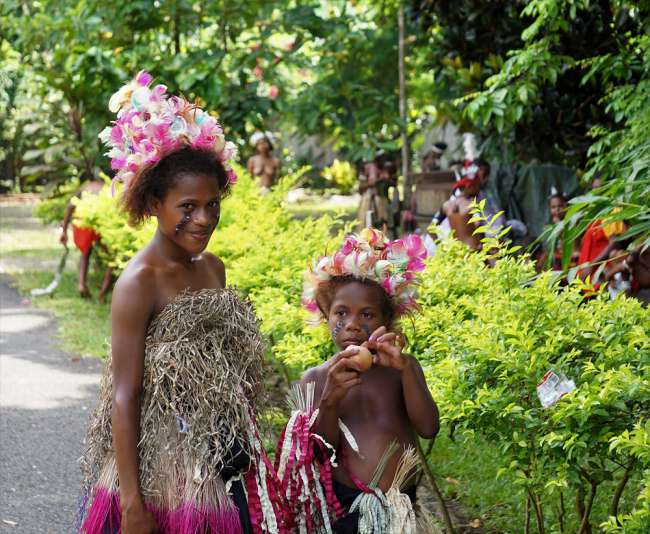
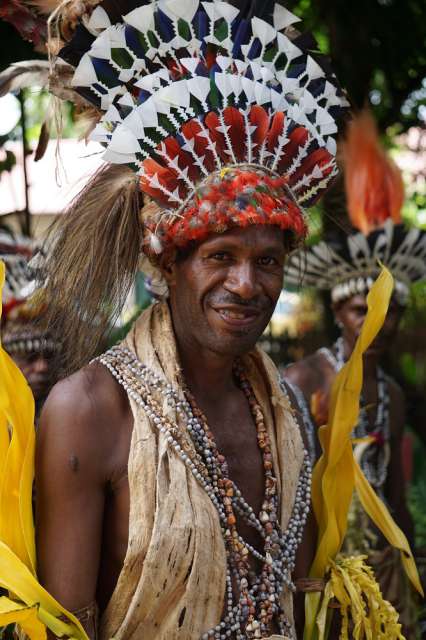
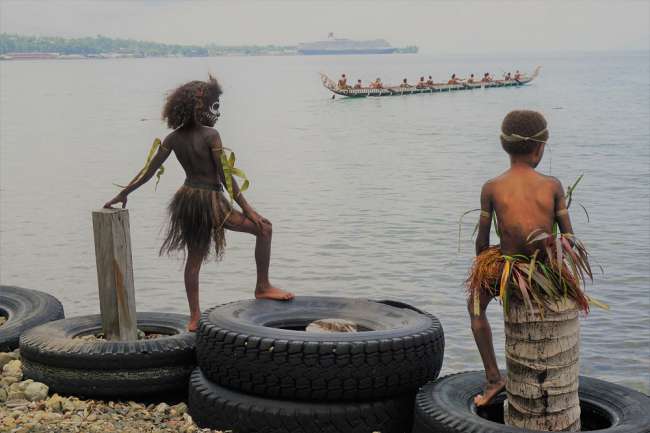
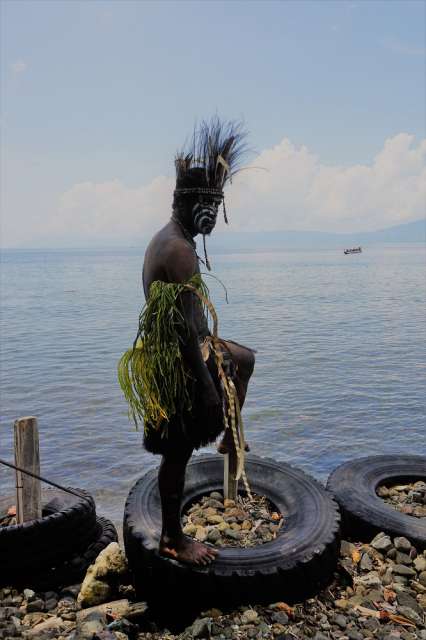
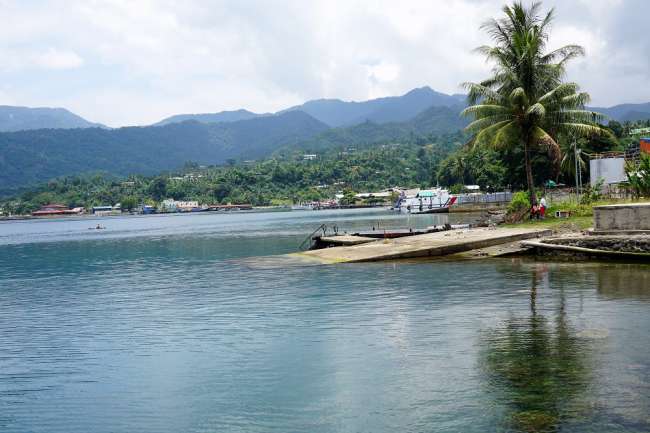
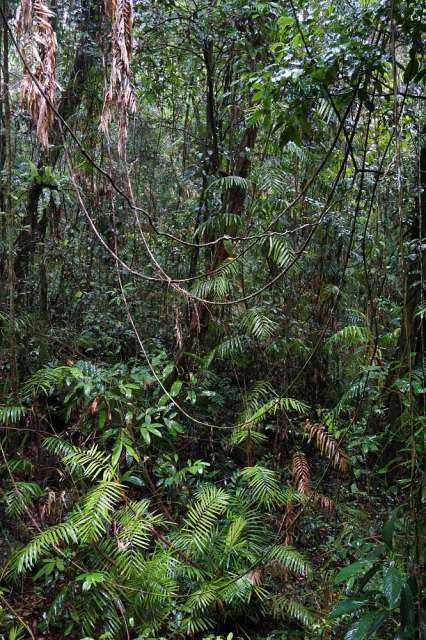
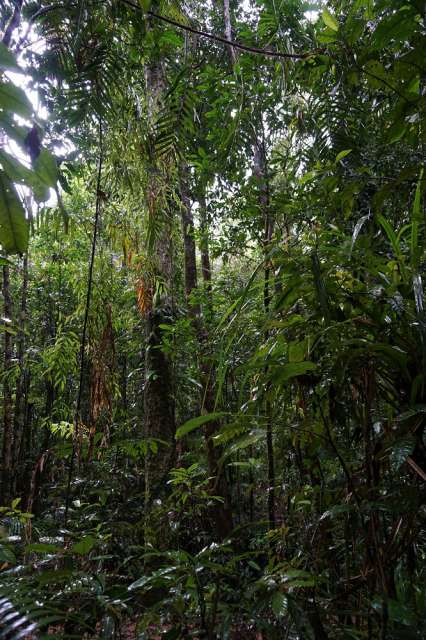
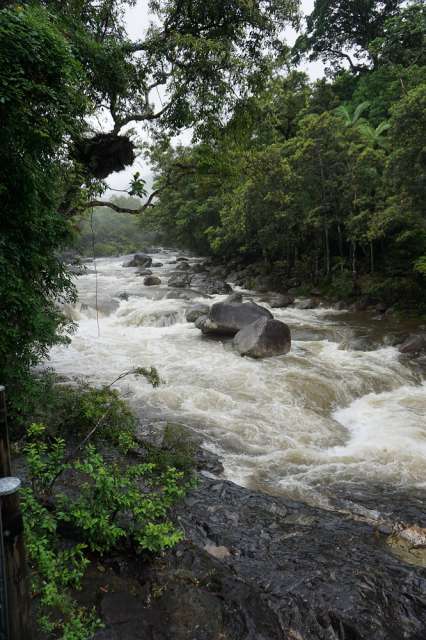
Ingwadiše go Lengwalo la Ditaba
The last few days were the last on the southern hemisphere. The QE crossed the equator for the second time today and is now heading towards Japan.
I take many beautiful impressions from the South Pacific with me, especially the last few days will remain in my memory.
In the Australian northeast coast near Cairns, I was in the rainforest, in the Daintree National Park in Queensland, which has 2/3 of all plants and animals on Earth due to its species richness. It rained on that day, which, of course, was a pity because of the beautiful landscape with the long beaches between Yorkey's Knob, where our ship was, and Port Douglas, but I found that the rain made the mood and sounds in the rainforest even more authentic. Although well equipped against the rain, I sweated quite a bit under the rain protection due to the high humidity. The beautiful shades of green of the plants, especially the ferns, and the rushing Mossman River with its many large rocks were worth seeing. I could cross the river and paths via suspension bridges and enjoy this special atmosphere in the very tall trees and dense vegetation.
After Australia, we went to Papua New Guinea and everyone wondered why we were actually going there and what there was to see. There wasn't even a travel guide about Papua New Guinea in the otherwise well-equipped library. The tour manager's "Port Presentation" didn’t provide any real insights either. I only knew that there are still many individual tribes living there in seclusion, preserving their culture, and that there was even cannibalism not too long ago, and the chief wore the teeth as trophies in the form of a necklace. Nowadays, PNG - as the abbreviation goes - is a rather poor country with little infrastructure and economic opportunities. Therefore, the enthusiasm for this next destination was very limited.
Under Captain, he announced the day before that it would be a "maiden call," meaning the first time the port was being visited, as a kind of maiden voyage, which is why the governor and some dance groups were coming to welcome us, which we shouldn't miss.
So, I got up early, grabbed my camera, and found a nice spot on deck three to watch the whole thing because not everyone had noticed it yet. And it was really worth it. The hosts really went all out: a reception tent decorated with palms, green plastic chairs for the dignitaries, and above all several dance groups, some of them in grass skirts, sparsely dressed or in fierce war paint. These warriors then rushed towards the captain, the 1st officer, and the cruise director as they went ashore. It is customary to yell and intimidate your guest first, which was also the case with the Maoris. So our crew went unimpressed by the spears and the yelling towards the governor. They were then given floral wreaths, drums were played, and gifts were exchanged. It looked to me like something out of an operetta from the old days.
The people, whether dancers, dock workers, or spectators, were absolutely thrilled that the QE had come to them. Such a large ship had never been there before, the governor said, who spoke quite good English. The locals waved enthusiastically, which was somewhat strange, how happy they were. I later learned that the dance groups, which I had mistaken for professional folklore groups, had come from the most remote areas and had even walked for up to two days with people of all ages to participate. So the governor had gathered the whole island. After the welcome, which took quite a long time because new dances kept following, the governor and his entourage, as well as some of the dock workers, were invited aboard the ship for a meal and a tour. They took lots of photos and were very impressed.
Then, I once again took a very rickety bus to a place that was luckily not far away, where there was a general meeting of all dance groups and people from Alotau and the surrounding area. Dances were performed again in a very relaxed manner, craftsmanship was shown, and the boats were presented and music was played. Everything happened at the same time, so no show, but everything very spontaneous. At first, I was very cautious about taking photos because I didn't know if I was getting too close to them, but they friendly smiled into the camera or posed with their war paint, or they were happy if they could scare someone in front of the lens with their battle cry and jump. It all went very casually and happily. There were many children there who found it particularly exciting and were also adorned with colorful paintings. Above all, they were not intrusive at all, they didn't ask for money or anything else, they were happy with a nice smile and a thank you with gestures. I have never experienced anything like this before, how little commercialized the whole thing was. Even though we couldn't communicate, it felt like being invited. In any case, I spent over three hours there, much longer than planned, until I took one of the rickety buses back to the ship. It was terribly hot and humid all day, even hotter than in Samoa. The high humidity in particular affected everyone. When I went out on deck in the morning to take photos, the lens kept fogging up, it was so hot and humid, I had never experienced that before.
When we left in the evening, there were two dance groups again, and everyone, including the harbor staff, waved goodbye. They even had the very youngest children, around 2 years old, who were still very energetic and swayed and jumped in their grass skirts. So even during departure, there was a great atmosphere and enthusiasm that also infected the passengers.
Everyone who went ashore was enthusiastic about how this visit went. But a large part of the passengers didn't even go ashore, unfortunately.
After this South Pacific conclusion, we are heading back towards the equator. The sea has become rough again, with a thunderstorm and a short heavy rain shower in between. According to the captain, we felt the aftershocks of a 6.0 magnitude seaquake that was 48 nautical miles away. So it really is a natural experience at sea.
During the total of 5 sailing days to Okinawa, we are now preparing for a new culture. There are already 300 Japanese people on board, and apparently another 600 will come in Kobe. You can already feel it in the daily life on board. Next to my table, there is a Japanese couple who take photos of themselves with each course from all angles with their handheld stick throughout the entire meal. When they are not taking selfies, each of them eats while looking at their iPhone, without looking at the plate. So, from our point of view, it's quite unusual for a dinner in a restaurant.
Today, the Japanese hostesses invited Spanish, French, and German guests to an origami class. It was a colorful mix with a total of 5 languages at the table, and the Japanese women knelt between our chairs and showed and helped us with the folds and creases. I found it incredibly complicated and didn't consider myself very skillful. But the Japanese woman who helped me praised me in the highest tones, which I couldn't really understand. So if they do that in school too with their students, they have their work cut out for them. I found it funny when the hostess told me that she would soon be very busy and would spend a lot of time at the infirmary once the 600 Japanese board the ship. I found that strange and asked why. She said that Japanese people always immediately go to see a doctor when they feel unwell, and since they usually don't speak much English, she is always used a lot for translation. So I'm curious and will observe that.
Otherwise, I use the days at sea for the educational program on board because there are usually very good training courses offered, such as computer programs. I have just learned more about my iPad, after I have already made good progress in the editing program Photoshop Elements 12. But there are also seminars on "Smart Home," blogging, Skype. We oldies are all represented and have a lot of fun, and also have the ambition to impress our children when we return with how well we now know our way around the digital world.
Tomorrow is the midpoint of our journey. Half of the days are already over. In terms of nautical miles, our ship has already covered 20,000 nautical miles (about 36,000 km), almost 60% of the journey. Therefore, the captain is throwing a cocktail party to celebrate.
Best regards to all of you,
Eva
Ingwadiše go Lengwalo la Ditaba
Karabo (3)
Petra
Liebe Eva- Maria, wie bunt und schillernd deine Reistage sind! Heute wird es vielleicht sogar ein wenig Konfetti geben, vielleicht auch einen wilden Tanz mit Geschrei?! ( diese Idee der gastfreundschaftlichen Begrüßung finde ich ganz entzückend... *.* ) wie auch immer, dieser Tag soll für dich besonders sein- ich wünsche dir alles Gute, auch im Namen meiner Familie. Bleib gesund und wohlgelaunt, sauge wie ein Schwamm alles auf- heut den Champagner <3 ich vermisse dich im Saal und freue mich, wenn du wieder zurück bist. Safe travels and take care. PetraKai-Hendrik
Liebe Frau Friedrich-Kihm,
ich darf Ihnen im Namen meiner Mutter und natürlich auch von mir die allerherzlichsten Glückwünsche übermitteln. Die Anmeldung per Mail steht leider z.Z. nicht zur Verfügung, so dass ich mich schnell angemeldet habe. Genießen Sie Ihre Reise, den besonderen Tag und kommen Sie gesund und munter zurück!
Viele Grüße aus Cuxhaven und Hamburg
Waltraud und Kai-Hendrik BormannDörthe
Liebe Evi, oh wie ich dich beneide - oh wie ich dir diese Reise gönne! Danke für die schönen Berichte samt Fotos und die Teilhabe an deinem großen Abenteuer. Liebe Grüße auch von Hans und bis bald, Dörthe 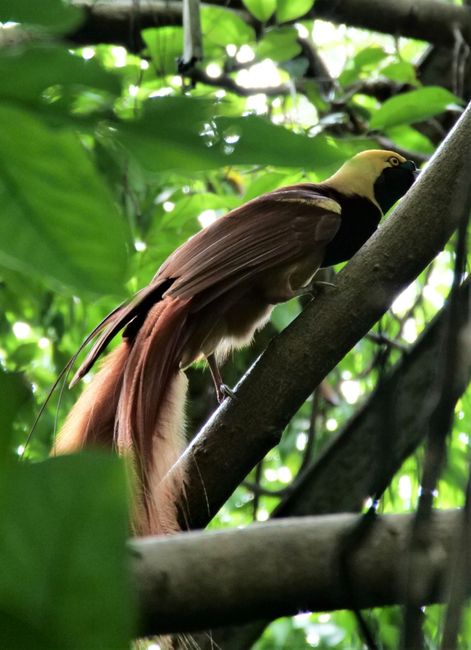
Dipego tša maeto Papua e Ncha Guinea
